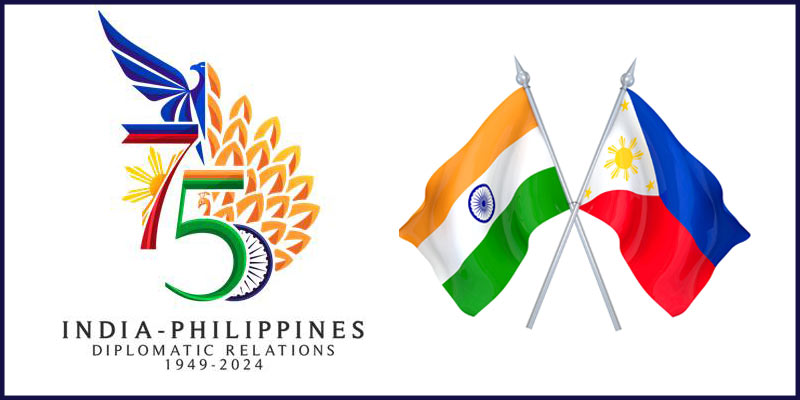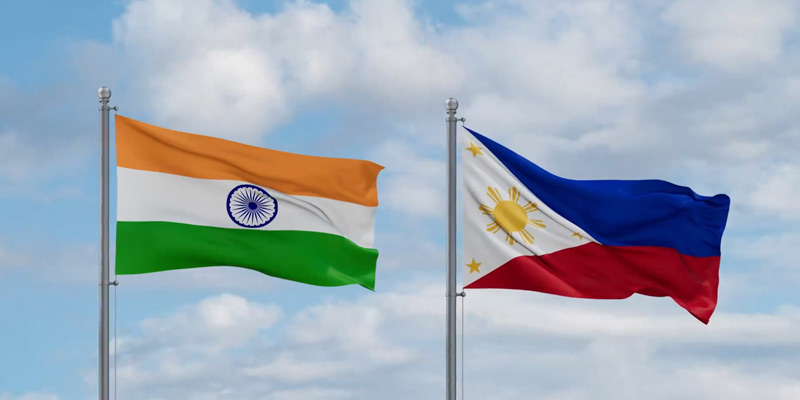- India
- Dec 14
75 years of India-Philippines diplomatic relations
• The inaugural India-Philippines Maritime Dialogue was held on December 13 in Manila.
• The event coincided with 75 years of diplomatic relationship between both countries.
Highlights of the meeting:
• During the dialogue, the two sides exchanged perspectives on prevailing maritime challenges and discussed ways to enhance maritime cooperation in furthering a conducive environment for mutual growth and global well-being.
• They laid emphasis on adherence to a rules based order, especially the UN Convention on the Law of the Sea (UNCLOS), and explored cooperation initiatives in the maritime domain to uphold the same.
• India and many other democratic countries have been pressing for peaceful settlement of the disputes and for adherence to international law, especially the UNCLOS in the South China Sea.
• While endeavouring to increase bilateral engagement, they also deliberated on avenues to collaborate at various international and regional fora for shared objectives.
• They agreed to share best practices and partner in maritime capacity building initiatives in areas such as Maritime Industry, Marine Scientific Research, Ocean Economy, Humanitarian Assistance and Disaster Relief (HADR), Navy and Coast Guard cooperation and maritime law enforcement.
India-Philippines Relations
• India and the Philippines formally established diplomatic relations on November 26, 1949.
• When India launched the Look East Policy and intensified partnership with ASEAN in 1992, this also resulted in stronger relations with countries in the region including the Philippines, both bilaterally and in the regional context.
• With the Act East Policy initiated in 2014, the relationship with the Philippines has diversified further.
• India and the Philippines share warm and friendly relations, which have provided a firm basis to our expanding bilateral cooperation ranging from political exchanges, trade & investment, defence & security, healthcare & medicine, agriculture, development partnership, engagement in new technologies to tourism, culture and people-to-people exchanges.
• The umbrella bilateral mechanism is the Joint Commission on Bilateral Cooperation (JCBC) co-chaired by the Minister of External Affairs and the Philippines Secretary of Foreign Affairs.
• The Philippines has been supportive of a greater role for India in the UN Security Council. There are regular consultations between delegations of both countries in the UN and other multilateral fora.
• The defence ties between the two countries have been on a significant upswing in the last few years. In April, India delivered the first batch of BrahMos supersonic cruise missiles to the Philippines, in reflection of the growing military ties. The supplies came over two years after India inked a $375 million deal with the Southeast Asian nation to supply the weapon systems.
• The bilateral trade increased from $1.89 billion in 2015-16 to $3.05 billion in 2022-23, crossing the $3 billion mark for the first time.
• The major items of export from India to Philippines include engineering goods, automobiles part and accessories, transmission apparatus, electric transformers, petroleum products, semi-finished products of iron and steel, drugs and pharmaceuticals, organic and inorganic chemicals, electronic goods, bovine meat, oil seeds, tobacco, groundnuts and others.
• The major items of import from Philippines include electrical machinery, semiconductors, ores, slag and ashes, copper, lead, plastics, pearls and precious stones, residue and waste from food industry, animal fodder and others.
• Estimated Indian investments in the Philippines are valued around $5 billion.
• The Philippines recognises India as a global leader in terms of pharmaceuticals and medical supplies. Philippines accounts for around 20 per cent of total Indian pharma exports to the ASEAN region.
• The Indian community in the Philippines is estimated to be around 1,50,000.
• Culturally, like many of the countries in the region, Philippines also enjoyed civilisational links with India. However, in the case of the Philippines, this is yet to be fully explored and documented in a systematic way.
• The presence of numerous words with Sanskrit roots in Tagalog (the local language) and objects such as the Laguna Copper Plate inscription — the oldest artifact discovered in the Philippines written in Kavi derived from Pallava script; the golden statue of Agusan Tara, and the localised version of Indian epic Ramayana (Maharadia Lawana) testify to the historical links between the two countries.
Manorama Yearbook app is now available on Google Play Store and iOS App Store



